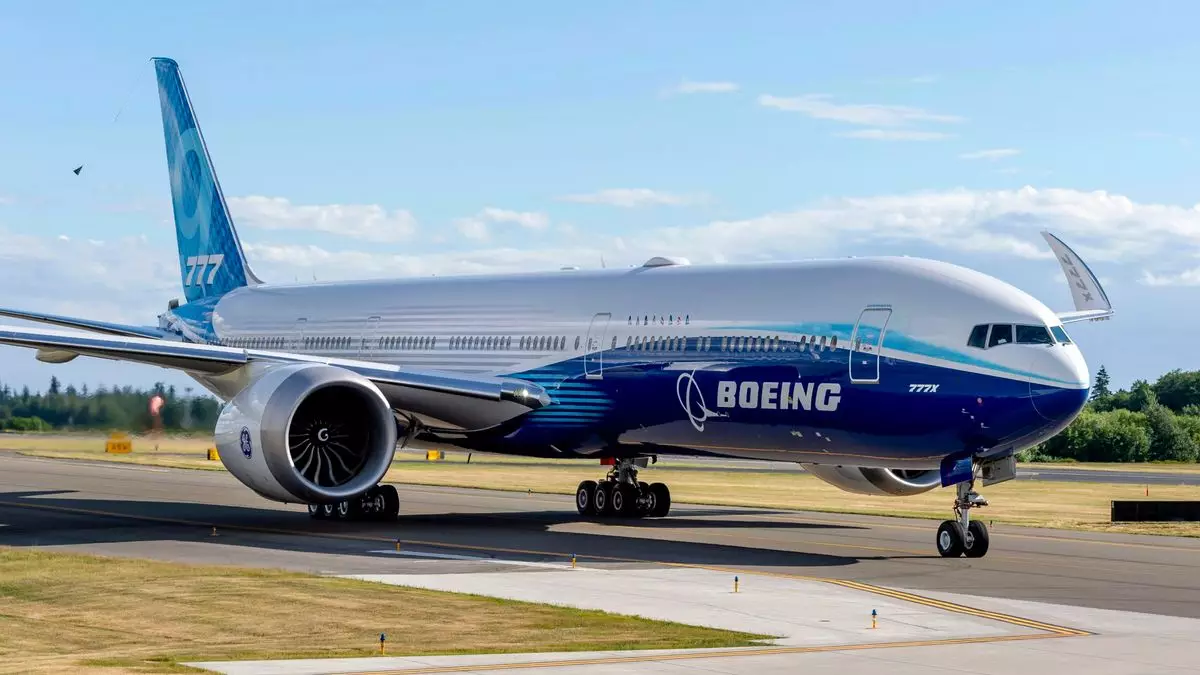As the aerospace industry grapples with the ongoing repercussions of a significant strike at Boeing, a major supplier has announced a substantial furlough of its workforce, highlighting the interconnected nature of the aerospace supply chain and raising concerns about safety oversight in the industry.
In a move that underscores the complexities of modern manufacturing, Spirit AeroSystems has declared that it will temporarily suspend operations for approximately 700 workers starting October 28. These employees primarily manufacture crucial components for the Boeing 767 and 777 models. This decision follows a strike initiated by 33,000 Boeing workers in the Pacific Northwest on September 13, which has effectively ceased production lines, not just for the 767s and 777s, but also for the Boeing 737 Max jets. Such a significant disruption reflects the broader challenges within the aerospace sector, particularly as it deals with labor disputes that impact the entire production ecosystem.
The looming possibility of permanent layoffs if the strike extends beyond November adds a layer of urgency and anxiety for both Spirit AeroSystems and its workforce. Acting Labor Secretary Julie Su’s involvement echoes the Biden administration’s growing concern regarding the strike’s implications for broader economic stability, hinting at the intricate balance of labor relations and economic health in this critical sector.
Boeing’s ongoing acquisition of Spirit AeroSystems for $4.7 billion is emblematic of a strategic pivot aimed at curtailing reliance on external suppliers. The intention behind this buyout is to secure greater control over Boeing’s supply chain — a necessary move in light of recent operational setbacks. However, the effectiveness of this strategy remains to be seen, especially as the strike persists and bottlenecks in production become increasingly pronounced.
By consolidating its supply chain, Boeing aims to mitigate risks associated with disruptions caused by external factors, including labor disputes and supplier constraints. However, such moves can also foster a false sense of security, potentially leading to complacency regarding compliance with safety regulations, especially amid ongoing scrutiny from the Federal Aviation Administration (FAA).
As Boeing navigates these complex issues, the FAA has announced an intensified review of its safety processes. This three-month examination aims to ensure that Boeing implements timely and accurate safety protocols, essential for maintaining public trust in the aviation industry. The motivation for this scrutiny is multifaceted; although initiated as part of regular oversight, it has been accentuated by historical incidents, such as the in-flight panel detachment from a Boeing 737 Max, drawing attention to potentially systemic safety oversights.
Such robust scrutiny comes in the wake of a report from the Transportation Department’s inspector general, which criticized the FAA’s oversight capabilities. It disclosed alarming insights into Boeing’s practices, including allegations of undue pressure on employees responsible for safety inspections—a situation that could lead to severe ramifications if left unchecked. The fact that many reports regarding these pressures remain unresolved adds urgency to the need for comprehensive reform in regulatory oversight.
The ramifications of the Boeing strike and subsequent supplier furloughs extend beyond corporate balance sheets; they reflect profound implications for the entire aerospace industry. With Boeing reportedly planning to lay off around 17,000 workers in the coming months, the cumulative effect on the labor market could be detrimental. It underlines how interconnected the aerospace ecosystem is and illustrates the fragility of production systems reliant on collaborative engagement between manufacturers and suppliers.
Moreover, the ongoing turmoil serves as a stark reminder of the critical importance of maintaining stringent safety standards in aviation. As labor disputes and economic pressures escalate, ensuring compliance and fostering a culture of safety must remain a priority for all stakeholders involved.
The challenges highlighted by this incident mirror larger themes within the aerospace sector—ranging from labor relations to the vital need for compliance with safety oversight. Desperate times may call for braver measures, but it is equally vital that the benefits of consolidation do not come at the expense of stringent safety standards and practices. The coming months will undoubtedly shape the future of Boeing, its suppliers, and the entire industry as it navigates these turbulent waters.

